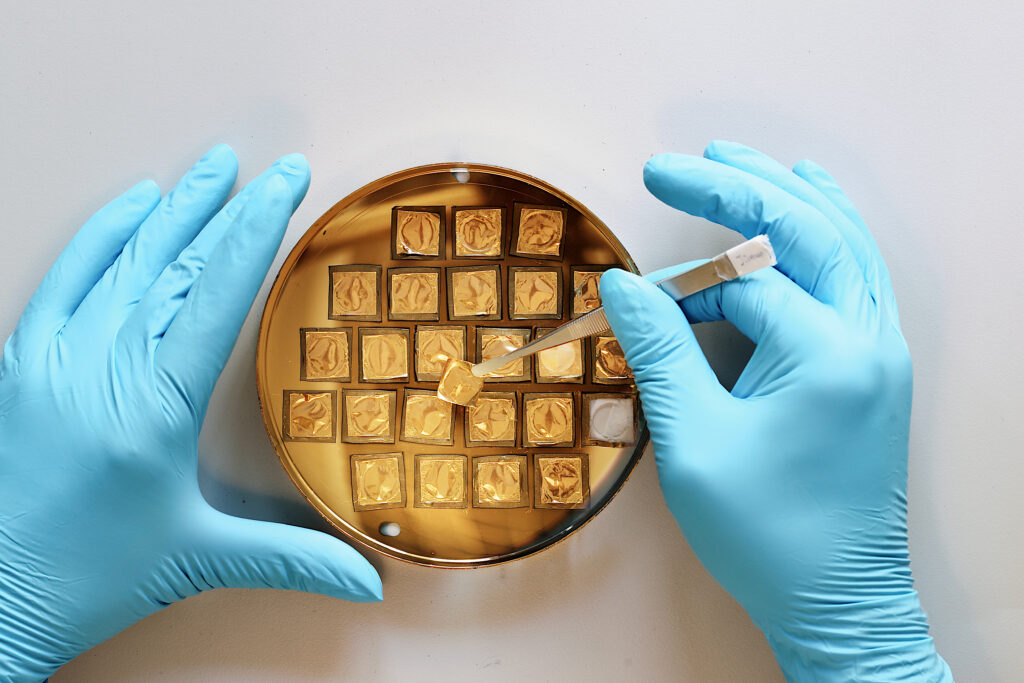Conversion and Storage
Use electricity to turn CO2 into a valuable product!
In the post-fossil world, electricity will be the dominant energy carrier. It can be stored in the form of chemical energy, providing the building blocks for synthetic fuels. Researcher Jimun Yoo from Maria Lukatskaya’s group prepares a gold catalyst that is used for the electrochemical conversion of CO2 into carbon monoxide.
As we discussed over on the power grids page, we don’t always have energy where and when we need it. When you’re sitting in a moving car, you can’t simply plug into the grid. When you want to boil yourself a cup of tea on a cold night, there probably aren’t enough photons hitting your rooftop PV to generate the electricity you need. In reverse, there are certainly times when and places where we produce too much energy! Wouldn’t it be useful if we could store it?
Surprise, surprise: That idea of storing energy is one reason why fossil fuels became so popular for the transport sector: Diesel, let’s say, is a very dense energy carrier that lets you keep your fuel tank jam-packed with energy wherever you go. But since fossil fuels are out of fashion, let’s think what other ideas come to mind…. How about batteries? Indeed, there are so many interesting innovations to tell you about battery technology that we have a separate page for that!
So let’s delve into another hot example: hydrogen. In some sense, hydrogen is not so very different to fossil fuels: They are united by the beautiful principle of energy conversion. Energy comes in diverse forms that can be transformed into one another. In particular, it can be transformed into the chemical bonding energy of atoms and thus stored in stable molecules. The crucial difference between the hydrocarbons of fossil fuels and hydrogen H2 molecules, however, is that the latter do not contain any C-atoms which later end up in CO2 molecules in our atmosphere.
So how do we produce hydrogen? In enough ways to form a rainbow – check out the video below for an entertaining and informative tour through green, blue, grey, brown and even pink hydrogen. Importantly, however, not all of these are actually sustainable. Even though the basic idea is the same, namely converting the energy of flowing electrons into the chemical bonds of hydrogen, the original electricity for e.g. grey hydrogen comes from steam methane reformation, while for green hydrogen it comes from renewables.
Now that we’ve covered some basics, how about some cool stuff? The field of electrochemical energy conversion and storage goes well beyond hydrogen and is rapidly advancing. At the Electrochemical Energy Systems Lab, Prof. Maria Lukatskaya and her team are working on making these processes not just green, but fast and efficient, too! Check out their research on molecular engineering of electrolytes, next generation materials for supercapacitors, catalysing CO2 reduction and more!


